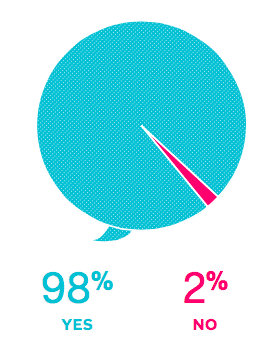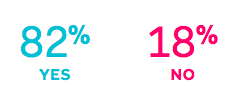We are well advised to avoid certain things as we age. Right behind making cranky complaints about the latest music are mutterings about “young people these days…” So I ask this question advisedly: What the heck are young people doing with all those extra IQ points they’ve gained on their elders?
In a seminal discovery about human intelligence, researchers began reporting dramatic increases in IQ scores soon after World War II. The gains among children and young adults—the populations who take the tests—continued and even accelerated in the 1980s: an average increase of 24 points in the United States since 1918; 27 points in Britain since 1942; 22 points in Argentina since 1964; with gains of a similar size throughout Western Europe, Canada, Japan, China, Israel, Australia, and New Zealand. The total increase, roughly 30 points during the 20th century (about 3 points per decade), is so substantial that if today’s IQ tests were scored on the scale used two or three generations ago the average child in 2017 would score in the gifted or near-genius range. And the young adults of yesteryear, if scored on today’s curve, would be at the borderline of “intellectually challenged.”
The phenomenon of global IQ gains was named “the Flynn effect” for James Flynn of New Zealand’s University of Otago, whose 1987 paper analyzing them brought the increases to psychologists’ attention and challenged the prevailing notion that IQ is largely determined by genetics. The reason that can’t be right is that it takes thousands of years for the human gene pool to change substantially, and any such change would first appear in small, isolated populations. In contrast, the rise in IQ scores was sudden and global. Only “environment”— everything from how children are raised to the cultural and social influences they experience to even what they eat and breathe—can change so quickly.
Many scientists have studied what aspects of the environment affect IQ, but psychologist Robert Sternberg of Cornell University has a different question: “Why has the steep rise in IQ bought us, as a society, much less than” it should have?
Surely with two generations of near geniuses populating the planet and coming into their own as leaders we should be doing better. The reason we are not—why we’re not solving more of the world’s major problems, from widespread poverty and outbreaks of infectious disease to soaring income disparities and unchecked climate change—is that “we are creating a society of smart fools,” Sternberg says.
He blames the tests that the education system, especially in the US, adopted as a way to channel the best of the best into the universities, graduate schools, and professional schools that serve as escalators to positions of power and authority—positions where one’s ideas about how to raise productivity, build a societal consensus around climate change, eliminate abject poverty and hunger, or defuse or prevent ethnic and racial hatred would not only get a hearing but also a launchpad to implementation.
Sternberg’s argument is straightforward. Even though according to the Flynn effect (whose existence is not in doubt) today’s adults are near geniuses, these geniuses, while clearly gifted at inventing dazzling new technology, have not made a dent in the world’s most challenging problems. Therefore, IQ tests must be testing something other than the wisdom, creativity, social and emotional intelligence, and other skills the world needs.
That would not be so bad, except for one thing: The tests that serve as gatekeepers to higher education, such as the SATs and GREs, are very similar to IQ tests. They assess memory, analytical skills, reasoning, and fluid intelligence (questions that don’t rely on factual knowledge—such as looking at three abstract patterns and determining which of four possibilities goes next in the sequence—tap fluid intelligence). Schools teach what the tests measure—the “teaching to the test” phenomenon that more and more parents are rebelling against. Therefore, the people these make-or-break tests anoint as worthy of elite education have been chosen based on mental abilities that seem to be insufficient.
“It’s not that what the tests measure is irrelevant,” Sternberg says. “But it’s a sliver of what matters, and the mental qualities the world needs are not well measured by these tests. Yet society has given them disproportionate weight” in using them to determine which young adults become tomorrow’s leaders. The tests do not measure creativity, wisdom, and social and emotional intelligence. They don’t measure “whether you can move beyond old ways of doing things to solve problems, whether you can generate novel hypotheses and test them, or whether you have the ability to question dogmatic thinking,” he says. “The evidence is clear that these are the kinds of skills that matter” when it comes to addressing complex problems. By ignoring these mental abilities, intelligence tests keep people with those abilities from getting the education that serves as a ticket to success, including positions of influence, and offer a disincentive for schools to teach and nurture these abilities. As every kid who asks a teacher, “Will this be on the test?” knows, if the answer is “no,” there’s no incentive to learn.
In a recent study, Sternberg and his colleagues gave “expanded” SATs—measuring creativity and practical intelligence in addition to the usual SAT fare—to students at 15 US colleges. It predicted college success, from grades to years to complete a degree, twice as accurately as SATs. And in two studies published in the July 2017 Journal of Intelligence, he showed that an assessment of scientific reasoning emphasizing hypothesis generation and testing was a better predictor of scholarly success than the GRE (used to evaluate potential graduate students).
We have an educational race that helps people improve “their own life chances, but which does little to choose winners who will create a positive, meaningful, and enduring difference.”
“Some people who had creativity and wisdom, and other traits the traditional tests do not measure, and who could have developed those abilities even further in college or graduate school, never got a chance to do that” because they came up short in what the tests assess, Sternberg says. The tests reward intellectual skills and abilities that, despite increasing dramatically in the last several decades, have proved no match for the world’s thorniest problems. “We are making a serious and possibly irreversible mistake,” Sternberg says. “We are creating an educational race that rewards people who score highly on skills that will help their own life chances, but which does little to choose winners who will create a positive, meaningful, and enduring difference to our future.”
The skills of abstract reasoning, fluid intelligence, and others that IQ and related tests measure are the beginning, not the end, of what matters. “We need to be developing,” Sternberg argues, “virtues such as good character, compassion, active citizenship, and ethical leadership,” as well as “creativity, common sense, and wisdom—using knowledge and skills for a common good, understanding others’ viewpoints, and balancing one’s own interests with other people’s.” Until we do, we will continue to run the wrong race and crown the wrong winners.
Background: The Birth of IQ
Efforts to quantify intelligence began in the late 19th century, and the first test to determine “intellectual age,” primarily the work of French psychologist Alfred Binet, emerged in 1905. Given the multifaceted nature of intelligence, Binet emphasized the limitations of quantifying it, but the desire to measure and classify proved irresistible. In 1916, Lewis Terman, of Stanford, published the classic The Measurement of Intelligence, and his Stanford–Binet test created the blueprint for the field. Since Terman promoted eugenics, his broader ideas about intelligence, genetics, and race were discredited.
Smart Phone, Lazy Brain
The Stickiness of Misinformation
The post Are We Becoming Smart Fools? appeared first on Mindful.
from RSSMix.com Mix ID 8196908 https://www.mindful.org/becoming-smart-fools/



